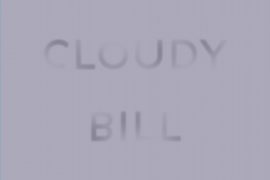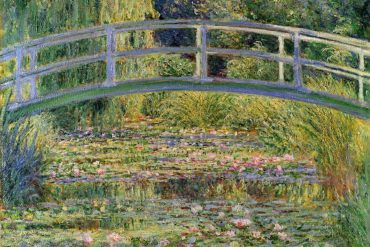In her essay “Upstream,” Mary Oliver offers her reader a scenario of a mind oriented towards (and in, and through) nature: “When the chesty, fierce-furred bear becomes sick he travels the mountainsides and the fields, searching for certain grasses, flowers, leaves and herbs, that hold within themselves the power of healing. He eats, he grows strong. Could you, oh clever one, do this? Do you know anything about where you live, what it offers?” Though many of us would pause at such a question, perhaps briefly consider the herbs and edible plants on our fire escapes, windowsill pots, yards, the fields and roadsides around us, the speaker of Kathryn Nuernberger’s most recent collection of poetry, Rue, would not hesitate. “Oh yes,” she would reply.
When I opened Rue, the first word that came to my mind was abundance. Nuernberger’s poems are full, rich, and wide, often taking the form of broad, long-lined columns. They seemed as rafts to me—ample enough to bear my readerly weight, even as they carry so many other things on their linguistic bodies. “It is generous, after all,” notes the speaker, “to draw one diagram after / another of everything you’d like to know.” Nuernberger’s poems are generous in their descriptions of the natural, historical world—but also towards their speaker and towards others. The first poem, “It’s Like She Loves Us and She Hates Us,” opens with an epigraph from Diane Arbus and the lines,
Sometimes I feel like that Diane Arbus portrait
of a woman with curlers in her hair and a cigarette
in her well-manicured hand staring too long
at the camera. Sometimes I feel like every character
I meet is an allegory of myself.
The interconnectivity of Rue begins among people. More particularly, it begins among persons depicted in art, the subjects of Arbus’s photography. From ekphrasis, the speaker moves to social connections, a friend “John” on Facebook, who “fell / from a ladder in his barn and broke his lawn mower / with his body but wasn’t hurt himself at all.” Then to German words, to a German exchange student, to vowel values, to Plato’s cave, and on, and on—the poem unfolds, one connection at a time. The term “free association” is often applied to writing that demonstrates logical leaps—often we are more interested in the leaping difference than the sharedness and connection. But it is a wide, connected world that Nuernberger’s speaker inhabits; the poems essayistic and journalistic in a way that remembers their reader as a social being.
There is a framing narrative for the poems in Rue, provided on its back cover:
As the speaker—an artist and intellectual—finds herself living through a rocky marriage in a conservative rural state, she maintains her sense of identity by studying the science and folklore of plants historically used for birth control. Her botanical portraits of common herbs…are interwoven with lyric biographies of groundbreaking women ecologists whose stories have been left untold in textbooks.
Yet this framing offers a distance—observing “the speaker” as an objective third-person character, whereas the poems themselves invite the reader into a more intimate I/you correspondence. And while there are women naturalists in the poems (for example, the seventeenth-century German-born naturalist and scientific illustrator Maria Sibylla Merian), there are also little-known male naturalists (Adriaen Coenen, sixteenth-century Scheveningen fishmonger and amateur ichthyologist). The poems in Rue are pragmatic and curious of all knowledge, for all the ways we can know ourselves and our world. “I can see there is no book / that is not a book I need,” says the speaker.
Calvin and other reformers belonging to some of the same periods as Nuernberger’s ecologists were against curiosity for curiosity’s sake—particularly set against a curiosity that could be linked with the “superstition” of the Roman Catholic Church. Who gets to ask the questions, who gets to speculate about the world and our place in it? Not everyone, according to Calvin. Yet the impulse of Rue is stronger than suspicion—it is an engaged belief in our tangible, green, crawling world. In “The Bird of Paradise,” the speaker notes:
I’m making a little notebook of pressed flowers
with my daughter. We learn their names in Latin
and we learn the names the midwife-witches
would have used. If they are safe to eat, we eat
them; we brew them and dry them and salve them.
It is a way to know them and a way to know
ourselves as creatures among them.
As a reader, I’m particularly drawn to an expansive and ordinary poetics—to the poet collectors, recorders, and journalists. But also: to a just and loving attention—one that praises and admires the good without turning aside from our own failures with each other. Attention is applied liberally in Rue, like layers of bright, thick paint. For example,
There was a kind of peacock flower Maria Sybilla
Merian drew flawlessly, its stamen uncurls like
a luxurious tongue licking butterflies right out
of the air. The yellow cheeks of petals buttercup
their way around the seductions of vines.
The rich depth of those seeds—crushed
they make the richest black ink in the world.
The flowers are not only on the page of Maria Sybilla Merian’s text, but there on the page in Rue, held out to the reader like a gift. Rue does not look away from beauty, and it does not look away from sorrow, either—from pain inflicted on others. In “The Bird of Paradise,” the Dutch colony of Surinam makes an appearance, and John Stedeman’s notebook reflections on the torturous deaths of the enslaved and “revolted” people of Surinam are collaged into the poem. What does a collection of poems look like that takes colonialism and whiteness into itself in this way, that acknowledges violence done to indigenous people by European “explorers” and naturalists? It looks bigger. It casts aside the cloudy glass. It ushers in not only historical clarity, but a clarity of the mind and heart. As in the poem “Whale-Mouse,” where the speaker wonders as the poem concludes,
The day will come when a better
historian than I tells me how Linnaeus
also classified people into columns
of white, black, yellow and red. It will
break the mind of my heart and I won’t
understand how it can be that even he
was just another man, nothing more
and maybe even something less than
that small pink flower of his most perfect
name I once loved to say. What do you
think? Can we love him anyway? Did we
ever really even in the first place?
No love without truth, without justice. And no justice without love. Is this too much weight for a poem to bear? No; poetry bears this weight each day. Poets do. Lives do. What will more knowledge do, and a poetry that acknowledges such an expansion of knowing? It will break the mind of the heart. Rue is, as the best poetry is, devastatingly truthful. But also: infinitely curious, and lovingly attuned.
Although I’m the last person to advocate for disembodied poetics, or criticism without biographical context—especially when it comes to women’s writing—I think that the poems of Rue want to trouble binary ways of thinking. And they do so largely through a generosity of attention; a capacious orientation towards the world around them. Yet, it matters who offers to do the carrying, and generosity and empathy are often gendered concepts. Rue asks that we think about the natural and social history of generosity and care, especially from the framework of caring for a body that bleeds, leaks, and potentially carries children. A woman’s body (and a nonbinary person’s body, a trans person’s body, a disabled person’s body) trespasses borders, goes outside the bounds set by the “universal” ideal of a cis, abled bodied man’s body. But we can, as Rue does, turn to nature to find reply to our questions about living in our world as transgressively curious (and generous) persons, as persons whose bodies live larger than the current legislation allows them to. As the speaker affirms in “I Want to Know You All”:
I want you to know, whoever you are, as someone hungry
for variety in the human condition, most especially
my own, cross-dressing farmers, you light up
the fields for me.
Writer and naturalist Elizabeth Bradfield, in her essay “Fluid States: Ocean as Place & Poetic,” writes: “The boundaries of bodies of water are messy and turbulent and they are the most productive places in the sea. It’s where the life is.” This, too, I would say about Rue: it is where the life is. Expansive, maximalist, and generous, Rue testifies a poetics of living well with others.
-
Reformed rhetoric for Catholic Church’s theological practices and beliefs.
-
Elizabeth Bradfield, in “Fluid States: Ocean as Place & Poetic,” The Poem’s Country. Pleiades Press, 2017.





